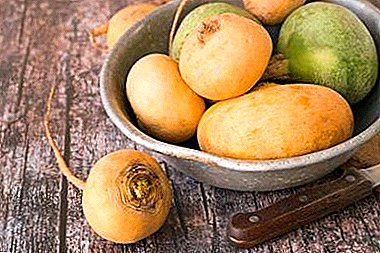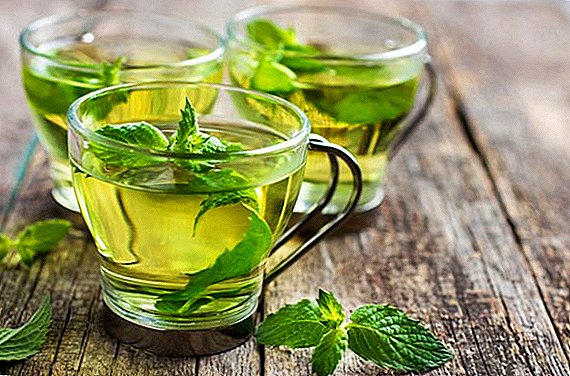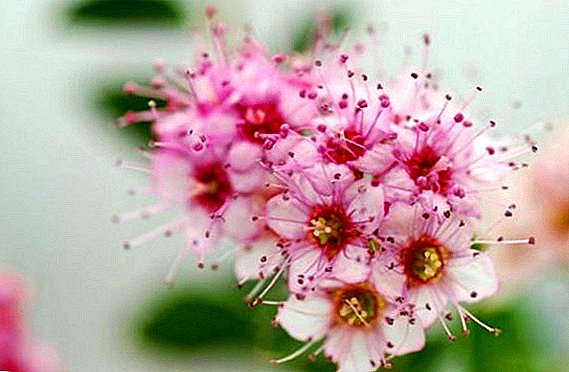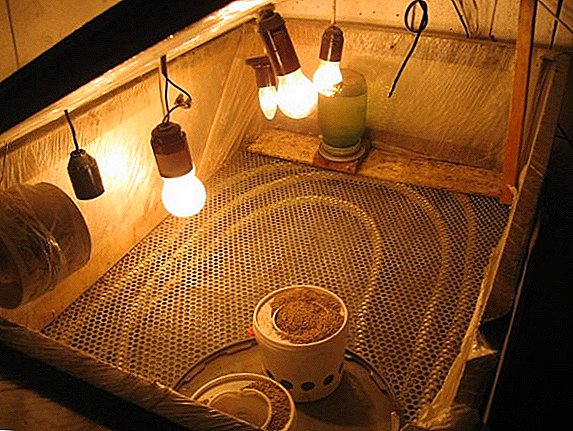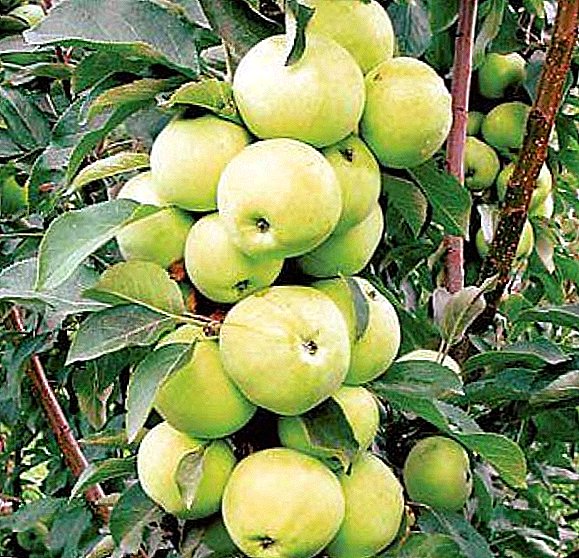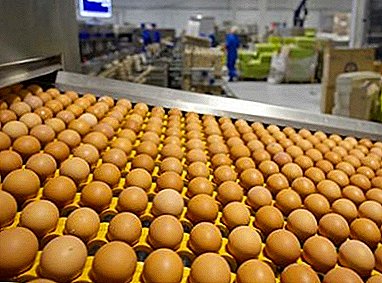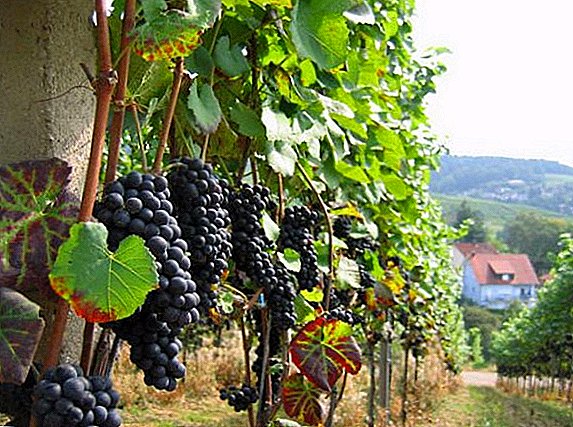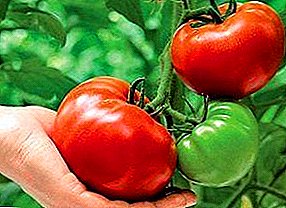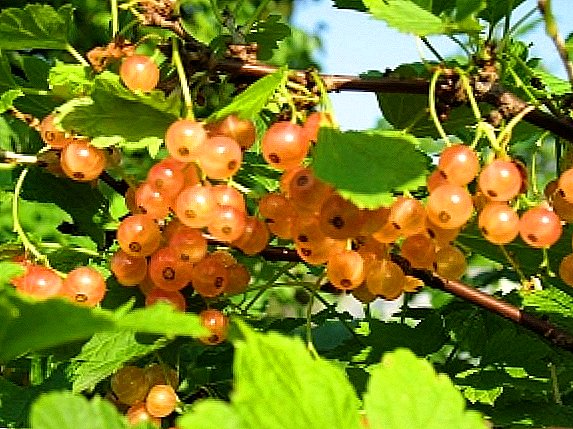
It has become customary for us in the summer to gather black currant berries and red berries.
It is these two varieties of currants have long taken root in our areas.
But few people know about another variety of this berry - golden currant, the second name of which is “krandal”.
North America is considered the birthplace of this type of currant, where in the area between the north-west and Mexico these bushes grow independently, without human help.
In Europe, this currant came in the early years of the 19th century. Initially, people used these bushes exclusively for decorative purposes, but later the fruits - berries of golden currant - began to be eaten.

The plant is a golden currant high, up to 2 - 2.5 m.
The shoots are red, almost naked, branch weakly, grow 30–40 cm in a year. The root system is very powerful, reaching a depth of one and a half meters.
Leaves of medium size, up to 5 cm in length and up to 6 cm in width, look a little like maple leaves, but the blades at the leaf plate of this type of currant are 2 or 3.
In the brush forms from 5 to 15 flowers, the brushes themselves are upright. These bushes are blooming with flowers of yellow or yellow-green color; they reach 1.5 cm in diameter and have an excellent smell.
Fruits are spherical in shape, black or brown, sometimes there is a gray bloom on the berries.
As for taste, it will be unusual for people who are accustomed to black currants. There is almost no acid in black currant berries, which makes it possible for people who do not have the opportunity to indulge themselves with black currant to consume it.

The chemical composition of berries of golden currant is less vitamin C than its black "sister", but much more vitamin A, that is, carotene, which is very useful for human health.
The skin of Krandal is dense, which makes it possible to transport these berries, without worrying about preserving the integrity of the crop.
There are no disadvantages as such in this class. The only thing to be noted is that the golden currant will not be able to replace the black currant, despite all the advantages and superiority of the first.
Krandal berries make excellent compotes and jams, and they are also suitable for jam.
Flowering plants begins in May and lasts 15 to 20 days. In the same fruiting bushes come in July, so the crop will not harm the frost.
The greatest advantage of golden currant is its unpretentiousness.
Black and red currants have their origin in the northern regions, therefore, they can successfully bear fruit in sandy soils, at elevated temperatures and lack of moisture, they are unlikely to be able to. Golden currant, as they say, is nothing. Plants calmly tolerate elevated temperatures, lack of moisture, frost, and even illness.
In winter, the bushes can freeze slightly, but in a short period of time they can quickly recover.

In addition to its food destination, golden currant used as an ornamental plant.
According to the decorators, this plant is a red flowering shrub. Decorate the garden, these bushes will be in the period from early spring to late autumn.
In the period of flowering and blooming the plants are very beautiful, thanks to its spectacular flowers. Many other ornamental plants can not be compared in beauty with the golden currant.
When flowering ends, leaflets form on the shoots, which also look amazing. But during this period, the kidneys with young leaves contain hydrocyanic acid, so they are very poisonous.
In July, when fruiting begins, the bushes look very attractive due to their fruits. In the autumn, when all plants fall asleep, golden currant looks very beautiful thanks to the red color of leafless shoots.
This species very advantageously combines both an ornamental plant and a fruit crop. These plants are suitable as a hedge, and separately from other bushes.
A little bit about the features of landing

Planting of any culture begins with the selection of a suitable place on the site. First of all, the soil in a selected place should be fertile, the territory should be windless.
Since golden currant is very unpretentious plant, it can even be grown under trees or in shady areas. Soil should be flat, without holes.
Approximately 2 weeks before the intended landing, it is necessary to prepare landing pits, i.e., dig up recesses 50x50x50 cm and bring rotten manure, superphosphate and wood ash into the ground, which will increase the soil fertility rate.
When you buy seedlings, you need to carefully examine the roots of the bushes. A suitable seedling should have at least 2 - 3 branches, the length of which should be at least 25 - 30 cm.
It is important that the root system is not too dry. If this fact takes place, then for 2 - 3 days the roots should be placed in water.
Pre-preparation is to remove bad roots and shoots. Dripping seedlings should be so that the root neck was immersed in the ground for 5 - 7 cm.
External shoots should not exceed 5 - 7 cm above the ground level. During planting, all fertilizers should be mixed with the ground. Approximately one third of the pit must be filled with this mixture, and the usual earth should be poured into the pit to the middle.
Next to each pit you need pour a bucket of waterand after it is absorbed, it will be necessary to place a sapling in the pit, and not strictly vertically, but under an inclination (approximately 45 degrees).
The roots of the seedlings will need to straighten and fall asleep with ordinary soil. After dropping each bush will need to be watered, and the ground to cover 5 - 10 cm mulch.
Straw, grass or peat can be used as a suitable material. After planting, all shoots will need to be cut, leaving 2 to 3 buds on each shoot.
Plant Care Tips

The procedure for the care of golden currant bushes is practically no different from the care of black currants. Therefore, if you dealt with the cultivation of the last type of currant, then problems with the cultivation of golden currant will not arise.
Since the currant variety under consideration is rather drought-resistant, its plants will survive a short dry period. It is better to perform abundant, but rare watering, which will be considered to be wet charging.
Per unit area of the beds should be about 30 - 40 liters of water. Special plants need water when the ovaries are formed, the fruits ripen and during the preparation of the plant for the winter, when the future flowers are laid in the buds.
Systematic fertilization can greatly increase the amount of future crop. therefore, every year in the spring and in the beginning of summer organic and nitrogen must be added. After harvesting, in preparing the bushes for the winter, you need to make wood ash and superphosphate.
Golden Currant Bushes branch very weakly, therefore, problems with the formation of the bush and pruning should not be.
With the constant removal of stepsons, it is not a bush that will form, but a whole tree that will bear fruit for more than 20 years.
Other plants, such as gooseberry or other types of currant, can also be grafted onto the currant bushes. Thus, a healthier and more beautiful harvest will be obtained. Due to the high resistance to many diseases, the plants will not need treatment with special preparations.
Golden currant will be for you an excellent choice when buying seedlings. You can try brand new berries with a new taste that will not leave you indifferent.


